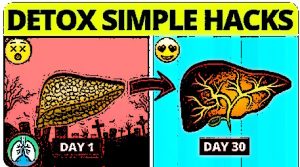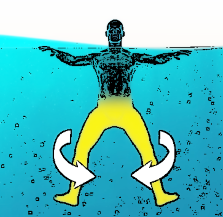 Branding Starts With Thinking Backwards
Branding Starts With Thinking Backwards
Most people like to start a project at the beginning and work their way through until they reach the end. Makes sense, or does it? If you don’t start with where you want to end-up, it’s unlikely you’ll ever get where you want to go. Remember our cabbage? Planning a shopping to trip to Home Depot because they got cool stuff, doesn’t help if what you want is a cabbage. Branding is no different. If you don’t start with how you want your audience to think about you, they will probably never think about you at all. So now that we got that straight let’s start our plan where it makes sense, the end. The 4 Step Web-Branding Plan
1 The Slogan
Your slogan, you know the thing that sits underneath your logo, that simple little phrase somebody in your office came up with that makes you sound important, stuff like “the cool air conditioning company.” Most small and medium size companies don’t think too hard about this little marketing gem, and as a result they either have something really cheesy, or some meaningless platitude that has no memorable meaning at all, like “the best people for the best job.”
Just because you’re small and don’t have millions of dollars to spend on television ads promoting your pithy little motto, doesn’t mean you shouldn’t have one. That catchphrase is who you are, and how you want people to remember you, short, memorable, and to the point. I remember my sons arguing over some complicated bit of business when one of them in frustration finally said, “Enough already. Give it to me in one word or less!” a demand to articulate what was important without all the peripheral issues; a lesson all businesses should pay attention to.
2 The Story Line (Logline)
To my mind, mission statements are a totally dysfunctional marketing element, misused and abused by a bean-counter attitude, born out of trying to squeeze every last drop of information into a statement that won’t offend anybody. A wise man once said, “If what you’re saying doesn’t offend somebody, maybe you’re not saying anything” and most mission statements that are full of meaningless platitudes and toned-down amendments, fall into the category of not saying anything, at least, anything worth hearing.
Okay so let’s forget about mission statements, after all this isn’t the military, and we’re not planning the next Desert Storm. Instead let’s think loglines, or what you can think of as your brand story line.
You know those short statements you find in TV Guide, or your weekend television insert, prompting you to watch the next episode of ‘House,’ or ‘Desperate Bimbos.’ They are a short form text version of a trailer, intended to get you to watch the movie or television show. For our purposes, we want people to go to our website, and stay-tuned long enough to get our core marketing message, and not walk out half way through the presentation. So, how do we do that?
The Six Elements of Effective Web Trailers
In order for us to come up with a compelling statement that prompts people to view our website presentation, we need to refer back to our old pal Don LaFontaine. What if Don LaFontaine wrote our website trailer. How would he do it?
Don had a very distinctive style that you’ve heard a thousand times for a thousand different movies, but they all followed a similar format. Each trailer needs to cover six distinct elements, who, what, where, how, why, and when. All the things businesses should be presenting in their elevator pitch, but with one extra ingredient, personality.
Here’s the format used in many movie trailers: “In a place (where), one man (who) brings stability to chaos (what), in an epic tale that will both amaze and inspire (why)! Coming soon (when) to a theatre near you.” Sound familiar?
Let’s take our air conditioning example, you remember, “the cool air conditioning company.” Let’s say our fictitious company is called Kool Air Conditioning, their website trailer might sound something like this:
“In a town where summer heat melts the cool of the coolest homeowners, one air conditioning company comes to the rescue. When the mercury rises to eye-popping, mind numbing numbers, the men from Kool spring into action, bringing relief to the sweltering masses. The Kool Guys will amaze you with their prompt service and installation know-how. The heat is on. It’s coming sooner than you think; it’s coming this summer to your town, your neighborhood; your house. Kool, the cool air conditioning company.”
Over-the-top? Maybe, but we’ve covered all the bases, we know who (Kool), what (air conditioning), when (this summer), where (your house), why (the heat) and how (prompt service and installation know-how). Now that’s a mission statement; one with a little style, panache, and personality; one that will get you remembered and prompt your audience to action.
3 The Personality
Movies like businesses all fall into certain genres or categories. There’s the action movie format that’s suitable for sports related businesses, the chick flick style that’s ideal for cosmetic or fashion industry businesses, and the family comedy format suitable for entertainment and recreation based companies, and of course the kids movie version perfect for any business selling things for children. The point is that every company and website has to have a personality.
Many hardnosed business executives scoff at the idea of spending money on such seemingly trivial marketing concepts as company personality, but ignoring your website persona, is a big mistake. You can either invest a little in developing, creating, managing, and promoting this personality or you can let the marketplace decide for itself, or worse, find you completely redundant and irrelevant.
4 The Delivery
You may be asking yourself, this sounds good on paper, but can it really be done, and can it be done for my business, on my website? The answer is damn straight it can. Like most things in life, and in business, it’s not grasping the concept tha’s so hard, it’s implementing it.
With a little investment and a willingness to take some chances, you can be the market leader. But if you thought you could simply take your newly created movie trailer style website elevator pitch and slap it onto your website in text form, you would be mistaken. How you deliver the message is as important, and in many cases more important, than what you say.
Whether you sell lipstick, licorice, or lingerie, you probably have lots of competition, so how you deliver your message is what’s going to make the difference.
You want your website presentation to motivate people to email or phone. You want to deliver a compelling performance that is more than a sales pitch, a presentation that uses voice, visuals, words, and music to create a website personality, a lasting impression; one that is going to allow you to stand out from the crowd and give you a competitive advantage.
Nothing will convince better than seeing an actual example, and guess what, we just happen to be able to provide you with one: check out SonicPersonality.com and see what an effective website presentation sounds like. If nothing else, you may get a chuckle or two.
About The Author
Jerry Bader is Senior Partner at MRPwebmedia, a website design firm that specializes in Web-audio and Web-video. Visit MRPwebmedia.com, 136Words.com and SonicPersonality.com. Contact at info@mrpwebmedia.com or telephone (905) 764-1246.
[tags]SEO, Effective Web Promotion, Article, Web Marketing, Internet Marketing , Website Branding, Search Engine, Article, Site Traffic, Web Marketing, Internet marketing, Make monehhy online, Targeted Online Marketing, Web Traffic, boost sales, awareness , credibility, Targeted Media Members, Adsense, Make Money Online, Google, Yahoo, Search Engine Optimization[/tags]



